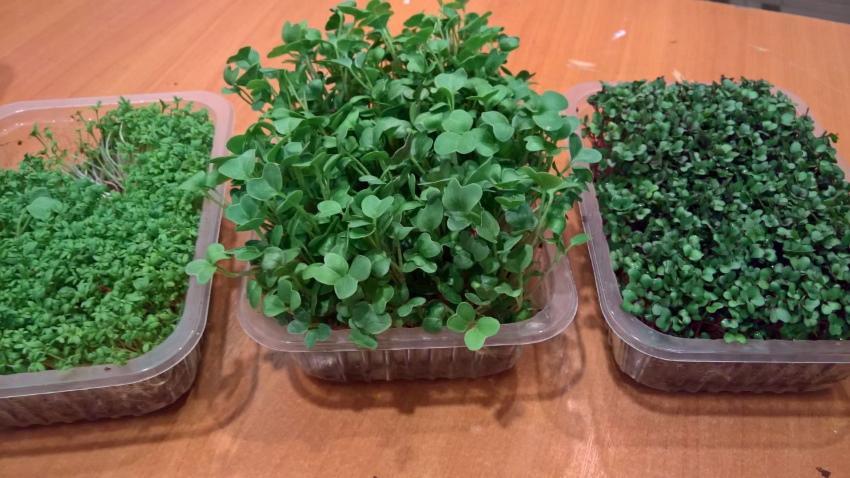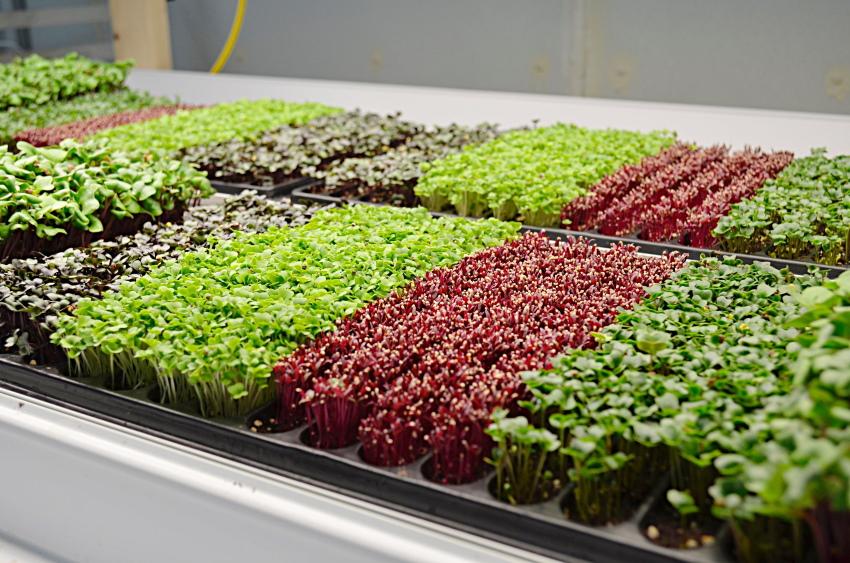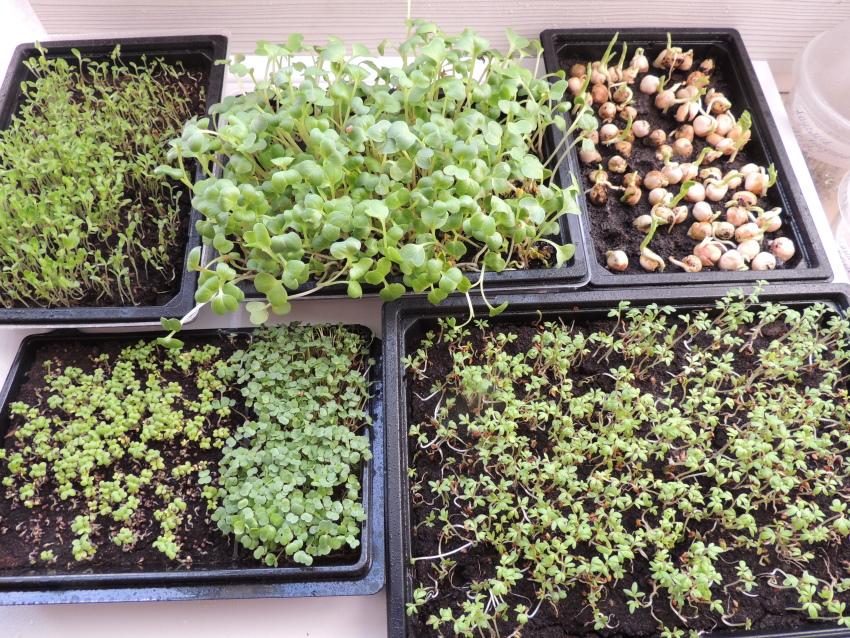How to grow microgreens at home - vitamins all year round
 It is not at all a secret for adherents of a healthy diet how to grow microgreens at home. It is in it that much more nutrients and vitamins are contained than in fully developed plants from the garden. There is another undeniable advantage: availability, and all year round. If in the spring and summer period you can still buy or pick your own greenery, then in winter it is problematic and very expensive. But it is not at all difficult to get vitamins directly from your own windowsill. Microgreens do not need a lot of space and special care, because they grow quickly and for a short time. Moreover, for cultivation, you can do without land altogether.
It is not at all a secret for adherents of a healthy diet how to grow microgreens at home. It is in it that much more nutrients and vitamins are contained than in fully developed plants from the garden. There is another undeniable advantage: availability, and all year round. If in the spring and summer period you can still buy or pick your own greenery, then in winter it is problematic and very expensive. But it is not at all difficult to get vitamins directly from your own windowsill. Microgreens do not need a lot of space and special care, because they grow quickly and for a short time. Moreover, for cultivation, you can do without land altogether.
Microgreens are young sprouts of vegetable crops (cereals, legumes, vegetables and greens itself). They are cut for consumption at the stage of a pair of leaves, when the height of the seedlings reaches 5 cm. Microgreens have a richer taste, most often with a slight tart note. It is good in salads, soups and even sandwiches.
What crops are suitable for growing microgreens

- basil;
- amaranth;
- arugula;
- mustard;
- chard;
- broccoli;
- bow;
- oats;
- wheat;
- spinach;
- chickpeas;
- peas;
- lentils.
But beans are not suitable for germination, because their sprouts contain poisonous substances. You should not sow the seeds of carrots, parsley and dill - they sprout hard, and the sprouts themselves are very thin.
How to grow microgreens at home
In addition to planting material, the stores sell whole special complexes for germination. They are inexpensive, but you can do without it, using any available means. Empty plastic containers for cottage cheese or sweets, glass baking dishes, and in general any shallow container can serve as a "bed".
Regarding the methods, that is, there are two options for growing microgreens:
- In the ground. It is better to use purchased soil or prepare a loose substrate based on garden soil. It is well moistened and sown by seeds, creating greenhouse conditions for germination.

- In a landless way. The soil is replaced by cotton wool, burlap, gauze. The rest is all as usual. Seeds are laid out on a richly moistened bedding and covered with foil until germination.

Seeds also germinate well in coconut substrate or sphagnum. But this method has one drawback - you have to buy the specified components.